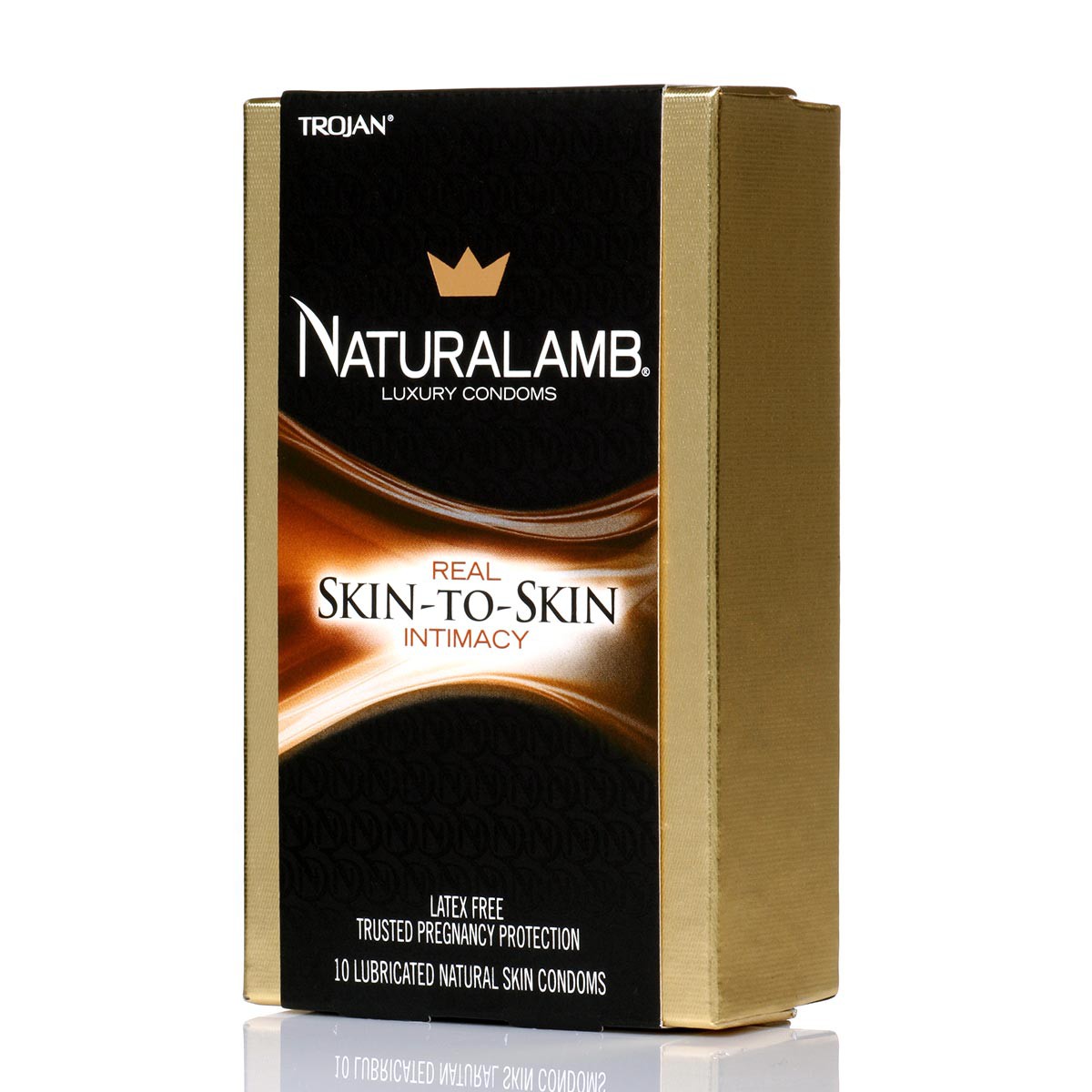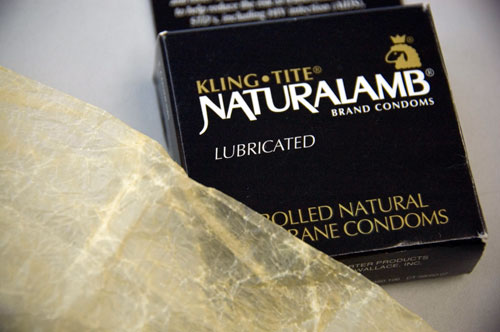Sheep Intestine Condom
Around the 1700s condoms were made from animal intestines. This new and improved condom was a chemical-soaked linen sheath that fit over the penis and was tied with a ribbon around the shaft to hold it in place.
 Thesexed בטוויטר 1860 S Condom Did You Know That Condoms Used To Be Reusable And Made From Animal Gut Membranes As Well As Lamb And Sheep Intestines Among Other Things Https T Co Jrhenoikrz
Thesexed בטוויטר 1860 S Condom Did You Know That Condoms Used To Be Reusable And Made From Animal Gut Membranes As Well As Lamb And Sheep Intestines Among Other Things Https T Co Jrhenoikrz
Sie müssen für diese Auktion registriert und als Bieter freigeschaltet sein um bieten zu können.

Sheep intestine condom. Although they are generally effective as a contraceptive by blocking sperm it is presumed that they are likely less effective than latex in preventing the transmission of sexually transmitted infections because of. Theyre made from lamb cecum which is the pouch located at the beginning of a lambs large intestine. In the mid 1800s a primitive condom was developed in New Zealand made from a sheep intestine.
This is because DeNicola explains lambskin condoms are not lambskin at all. Auktion als Gast ansehen Sie wurden überboten. In the mid 1800s a primitive condom was developed in New Zealand made from a sheep intestine.
For most of their history condoms have been used both as a method of birth control and as a protective measure against sexually transmitted diseasesCondoms have been made from a variety of materials. Condoms made from sheep intestines labeled lambskin are also available. This one from the 1990s was made in the United States from New Zealand sheep intestines.
They are made from sheep intestine a material that has micropores that while small enough to block semen are. Ive discovered that 11 can in. It wasnt until the early 1900s that it made its way to Australia where it was immediately improved by removing it from the sheep.
It was made out of a sheeps intestine. Its easy to forget that less than 200 years ago the only condom available was one made from a length of sheep gut that you had to wash and re-use. This post looks at their recent material history and some of the other chemistry modern condoms utilise.
Known as the Glans condom this Asian version only covered the tip of the mans member and could be made from anything from animal intestines to silk paper animal horns and even tortoise shells. Falloppio even went so far as to conduct a study of his new anti-syphilis device and had 1000 participants try it out. It wasnt until the early 1900s that it made its way to Australia where it was immediately improved by removing it from the sheep.
Condom with printed erotic motif France mid-19th century sheep intestine cotton ribbon. In the mid 1800s a primitive condom was developed in New Zealand made from a sheep intestine. To his delight and likely their relief none of the participants contracted the.
Feels like real skin including easily transmitting body heat The vagina stays moist They are more flexible for more penis sizes They are thin but strong You can feel the skin with the sex which adds to the pleasure but makes it seamless Men and. Needless to say it was already in circulation even before the latex condoms became popular. Lambskin condoms which are also known as sheepskin condoms can be described as the most natural condoms ever made available to men.
Today theyre made from a handful of different materials. Lambskin refers to a membrane created from sheep intestine. The invention of rubber vulcanisation was the first step towards the modern.
This material may not be as effective against STIs as latex but users often report that lambskin condoms. Thankfully the condom history didnt have to involve animal horns and tortoiseshell for long as condom technology continued to slowly evolve. Benefits of condoms made from sheep intestine.
Condoms made from the bladders and intestines of. Actually this is the first type of condoms used by males. They block the passage of sperm but are not recommended for the prevention of sexually transmitted infections as their pores are large enough to allow infectious agents through.
Diese Auktion ist eine LIVE Auktion. A pink silk ribbon tie is located at the open end contained in original wax-paper envelope. The history of condoms goes back at least several centuries and perhaps beyond.
Sort of a gift-wrapped take on safe sex. Condom made of parchment-like animal membrane likely sheep made from the lining of the intraperitoneal pouch at the beginning of the large intestine caecum. It wasnt until the early 1900s that it made its way to Australia where it was immediately improved by removing it from the sheep.
Um die größte Chance zu haben zu gewinnen erhöhen Sie bitte Ihr Maximal Gebot. The use of these condoms can even be traced way back to the Roman Empire. Prior to the 19th century chemically treated linen and animal tissue intestine or bladder are the best.
A Scotsman invented the first condom. Sheep-intestine condoms have been produced by the company since 1932.
 A Tale Of Condom History From Sheep Intestines To Latex
A Tale Of Condom History From Sheep Intestines To Latex
 History Of Condoms From Animal To Rubber Wellcome Collection
History Of Condoms From Animal To Rubber Wellcome Collection
 The Victorian Condom The Atlantic
The Victorian Condom The Atlantic
 The World S Most Expensive Condom Is Made Of Sheep Intestine And It Costs 44 000 Rupees
The World S Most Expensive Condom Is Made Of Sheep Intestine And It Costs 44 000 Rupees
 History Of Condoms History Of Yesterday
History Of Condoms History Of Yesterday
 History Of Condoms British Condoms
History Of Condoms British Condoms
 History Of Condoms History Of Yesterday
History Of Condoms History Of Yesterday
 Museum Of Contraception And Abortion
Museum Of Contraception And Abortion
 Sheep Gut Condom Maas Collection
Sheep Gut Condom Maas Collection
 A Tale Of Condom History From Sheep Intestines To Latex
A Tale Of Condom History From Sheep Intestines To Latex
 Trojan Condoms X10 Naturalamb Sheep Gut Latex Free
Trojan Condoms X10 Naturalamb Sheep Gut Latex Free
 Sheep Intestine Condom Contraception And Sterilisation Te Ara Encyclopedia Of New Zealand
Sheep Intestine Condom Contraception And Sterilisation Te Ara Encyclopedia Of New Zealand


Comments
Post a Comment